The Story Of One Of The 91st SRS COs,
|
||||||||||||||||||
| My reunion with Dottie was short lived. In early September, I took my flight back to Belem, Brazil for about a month to map some “holidays” as some small areas of incomplete coverage were called. We returned to MacDill to get ready to go to the CBI (China, Burma, India) theater. We were scheduled to head for the CBI in mid-November with 10 F-10s and 4 B-24s. Our F-10s went into the MacDill Sub Depot to replace our 5 man life rafts with 7 man rafts to accommodate the 7 man crews crossing the South Atlantic. Crew chief and assistant crew chief in addition to our normal crew of pilot, copilot, navigator, photographer and radio man. The story of the bail out of my crew of 7, two days before our scheduled departure is chronicled elsewhere in this web site. |
||||||||||||||||||
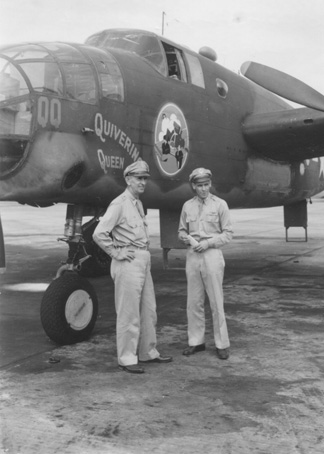 |
||||||||||||||||||
|
Above: Maj. Pat McCarthy, who had just taken over as Squadron CO, and Captain Becker. This photo was taken just a few days before Capt. Becker had to bail out of the Queen with his full crew of 7 while on a test flight after having the five man rafts replaced by seven man rafts by the subdepot at MacDill. - November 1943.
|
||||||||||||||||||
|
Editors Note: The complete bailout story is found in a related section of this web site under the title “Then the Whiskey Started to Come in Handy, A story from the life of Clarence E. Becker”. If you choose to read those details at this time, click here and use your back button to return for continuity with the Becker biography. If you would like to review a news clipping describing the bailout, click here and use your back button or find easy return at the bottom of that page |
||||||||||||||||||
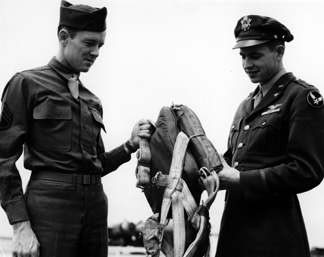 |
||||||||||||||||||
|
|
||||||||||||||||||
| My responsibility was to lead all 10 of our F-10s to India. Nine left on schedule and I followed two days later in another F-10, 3D (Ding Dong Daddy). The nine crews waited for me at Natal. We proceeded to Ascencion Island and then on to New Delhi via Accra, Kano, El Fascher, Khartoum, Asmara, Aden and Karachi. I reported in to General Stratemeyer’s staff in New Delhi. The first question I got was, “How many aircraft do you have?” “Ten”, I replied. The next question was, “How many did you start with?” “Ten,” I again replied. “Unheard of any unit ever arriving with all of their planes.” |
||||||||||||||||||
 |
||||||||||||||||||
|
Asmara, Eritrea street scene with charcoal burning taxicabs. |
||||||||||||||||||
| We were given the next day off to sightsee New Delhi and the Taj Mahal at Agra. The following day we flew into our British built base at Gushkara near Burdwan northwest of Calcutta. The B-24s had arrived and started flying gas over the hump from Assam into Chengchung and Chunking China, The F-10s started mapping all the air routes in India and the hump. The bases the B-29s were to use in India (southwest of Calcutta) and in China (at Chengtu) were already under construction. More about the Chengtu bases later. With the altitude of the mountains over the hump, our crew chiefs fine tuned our engines to enable us to fly at 25,00 ft instead of our usual 20,000 ft in order to increase the photo coverage. In order to obtain gas in China to fly F-10 photo missions from any China base, our B-24s would have had to deposit that amount of gas in China for our use.
In early February, I was called to Calcutta by the CBI staff and asked if we could map North Burma, still in Japanese hands. I said that we could do it in our unarmed planes if we could use all of them from the Assam Valley in a one time surprise mass mosaic. The size of the area they wanted mapped was huge. |
||||||||||||||||||
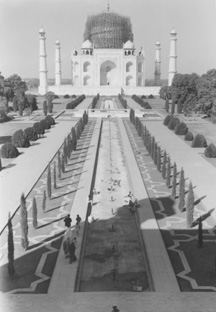 |
||||||||||||||||||
|
as it looked in November 1943 Note that there was repair work being done on the dome at the time of our visit. |
||||||||||||||||||
|
interactions with host communities in India and China that may be viewed by clicking here. You will find an easy return link to come back to this page. |
||||||||||||||||||
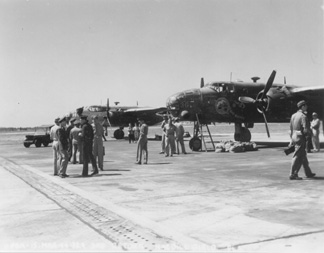 |
||||||||||||||||||
| I went back to Gushkara and our squadron staff planned the mission so that each airplane flew one flight line south and returned north on a parallel flight line. The mission was very successful and was essential to the Imphal invasion by US and British troops that took place shortly after we left the theater for our return to MacDill. We encountered no Japanese fighters that early morning. Again, luck was on our side. |
||||||||||||||||||
|
Flight Line at Gushkara |
||||||||||||||||||
| To complete our China coverage of the China bases at and around Chengtu, I flew my flight of 4 F-10s into Chengtu. The field was still under construction and we had to buzz the field in order to get the hundreds of Chinese spread out like a human ribbon across the middle of the runway tamping stones into multi level of stones beneath them. We were told that the Chinese had conscripted 50,000 people, put a hundred pound sack of rice on their backs and had them walk up to a thousand miles to Chengtu. There they gathered and sorted by size millions of river rock from the dry river beds nearby and stacked them neatly in piles about a sixty feet long and four feet high. All rocks in a single pile were about the same size.
They had no mechanized equipment, They hauled the rocks from the river beds to the sorted piles and then to the runways with nothing but bamboo poles on their shoulder and the rocks in baskets at each end of the poles. The lines of Chinese were like a line of ants going to and from their assigned route. All the workers on the runway took the rocks and with small mallets pounded them into an almost smooth surface. The large rocks formed the base, and then smaller and again smaller rocks were added until you had a smooth surface. It was an amazing feat. The workers lived on the rice they had carried with them. I don’t know where they were housed. |
||||||||||||||||||
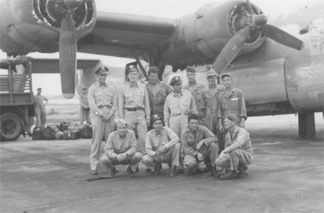 |
||||||||||||||||||
|
|
||||||||||||||||||
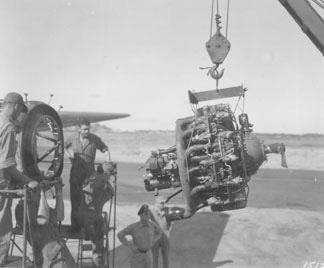 |
||||||||||||||||||
|
|
||||||||||||||||||
| I got most of my information from a Chinese professor from the University of Shanghai who had been conscripted. He told me that if he had been richer, he could have bought his way out by paying someone else to replace him. He was one of the management team that organized the project and kept it on schedule. I am still amazed at what their pure manpower accomplished. We completed our photo coverage of the bases the B-29s were to use 6 months later and we returned to Gushkara. Editors Note: Page 2 of this chapter presents a collection of photographs that relate directly to the story line of this chapter. If your schedule permits, we are sure you will enjoy reviewing them. |
||||||||||||||||||
|
move on the the next chapter of your choice 1 — 2 — 3 — 4 — 5 — 6 — 7 — 8 — 9 — 10 — 11 Cover Page — Introduction — Table of Contents Or you may go to Home - Contact Us - Cold War Hist. - 91st SRS Hist. - Stardust 40 Mission Story |
||||||||||||||||||